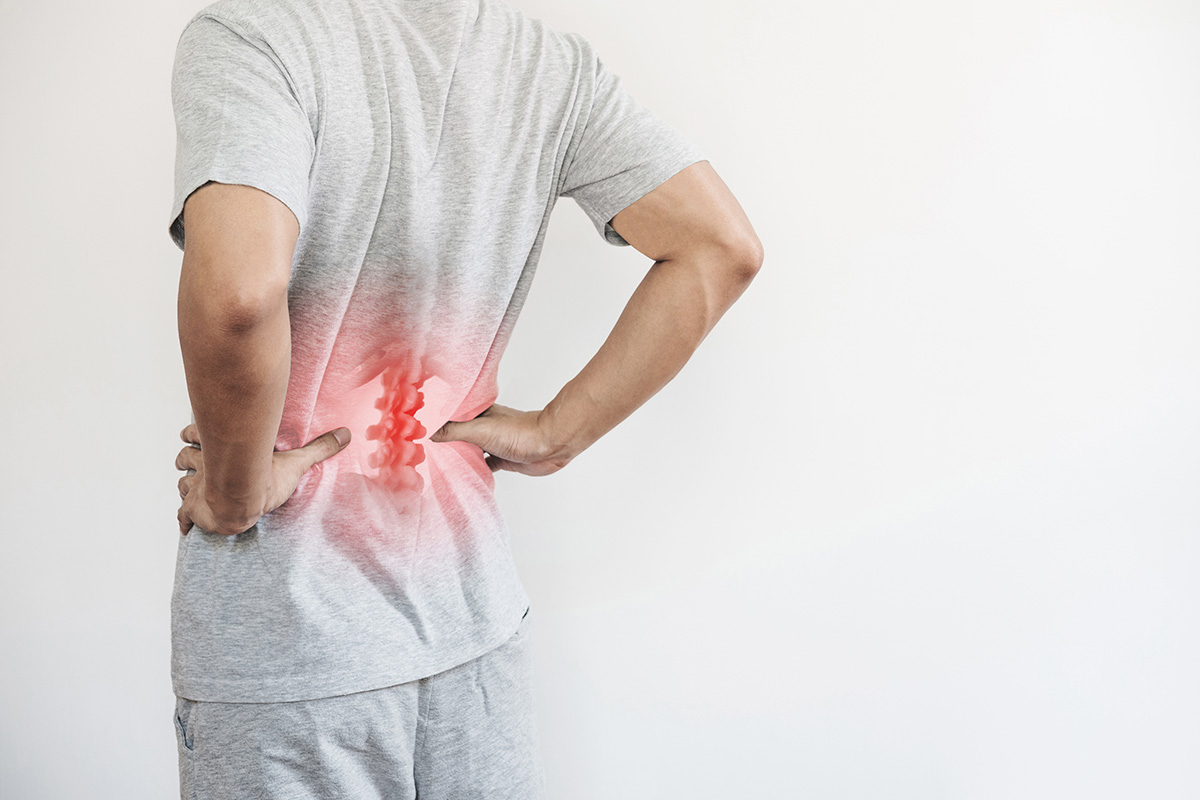
Your recovery from back pain starts with an accurate diagnosis. There are many structures in the lower back that can cause pain. This makes finding the source of your pain difficult. While some diagnoses are straightforward, like tumors, infections, or fractures, for many conditions it is hard for spine specialists to agree on a concrete diagnosis. With different diagnoses requiring different treatments, it is imperative that it is accurate. The sooner an accurate diagnosis is made, the sooner treatment can be issued, and the sooner the patient will have relief. For back pain, your doctor will perform a series of exams and tests to find the underlying cause.
Patient History
Any diagnosis starts with patient history. A conversation must take place between the doctor and the patient to give the doctor a better idea of what may be happening. As the patient, you will provide a detailed description of your symptoms and medical history.
Inquiries typically include:
Current symptoms. When do you feel pain? How far does the pain spread? Do you have any other symptoms (weakness or numbness) at the same time? How does the pain feel (achy, sharp, tight, dull, hot, stinging)?
Activity level. This is general information about your lifestyle. Are you more active or sedentary? Does your job require sitting at a desk or are you standing for long periods of time? How often do you exercise?
Sleep. How many hours of sleep do you get? What is the quality of sleep? Do you have a sleep position that you prefer? What kind of mattress or pillow do you use?
Posture. How do you stand or sit during the day? Are you hunched over for the better part of the day? What kind of posture is the most comfortable or uncomfortable?
Injuries. Has the person had any recent injuries? Has there been an injury in the past that might be relevant now?
These questions provide your doctor with a better view of your daily life. They also give them clues at what may be causing your back pain. Medical history is a powerful tool for making an accurate diagnosis.
Physical Exam
Physical exams are meant to further narrow down possible causes of pain. They include testing nerve function and muscle strength, testing pain in certain positions, and more. A physical for lower back pain typically includes:
Palpation. Your doctor will use their hands to locate any muscle spasms or tightness, areas of tenderness, or joint abnormalities on your lower back.
Neurologic exam. Diagnosis includes a motor exam. The doctor will ask you to move your hips, knees and ankles. Your doctor may also ask for your to extend and flex your feet as well. After the motor exam, a sensory exam tests your reaction to light touch, pin pricks, and other senses on your lower back, buttock, and legs.
Range of motion test. The doctor will ask you to bend or twist in certain positions. This helps determine what positions worsen or recreate pain. It also shows movements that are limited by discomfort.
Reflex test. This test finds weakened reflexes and decreased muscle strength. With poor reflexes, the nerve root is not responding as it should.
Leg raise test. You will lay on your back and raise one lef as high and straight as possible. If this test causes pain, then you may have a herniated disc.
These tests give your spine specialist a good idea of what type of problem you are having. If your doctor is able to diagnose your back pain based on your medical history and physical exam, then further testing is not needed.
Diagnostic Imaging Tests
A diagnostic test may be recommended to confirm the suspected cause of your pain. For example, if a herniated disc is suspected, an imaging test can provide further information about the location and size of the disc, and the affected nerve roots. Imaging tests are also used if the pain is severe, not relieved within two to three months, or it does not get better with nonsurgical treatment.
Common imaging tests include:
X-rays provide detail of the bone structures of the spine. They show abnormalities, such as arthritis, fractures, bone spurs, or tumors.
CT scans provide a cross-sectioned image of the spine. During the test, x-rays are sent through the spine. After scanning, the computer picks up and creates a 3D image which allows doctors to look at it closely from different angles. The resulting image provides a greater view of bony detail and can show different conditions, such as a herniated disc or spinal stenosis.
MRIs, or Magnetic Resonance Imaging scan, provide detailed image of the spinal structures. Conditions are assessed by looking at detail of the discs (such as for degenerative disc disease, isthmic spondylolisthesis) and nerve roots (such as for herniated discs or spinal stenosis). Without the use of x-rays, they can detect abnormalities with soft tissues and intervertebral disc. These scans are most commonly used for injection planning, pre-surgical planning, spinal fusion, and other types of back surgery.
Imaging tests provide a clear view of where back pain is happening. Finding the location of the problem is critical to going forward with treatment. Imaging tests not only locate the source of the problem, but they also help doctors and surgeons plan if a patient is having surgery.



